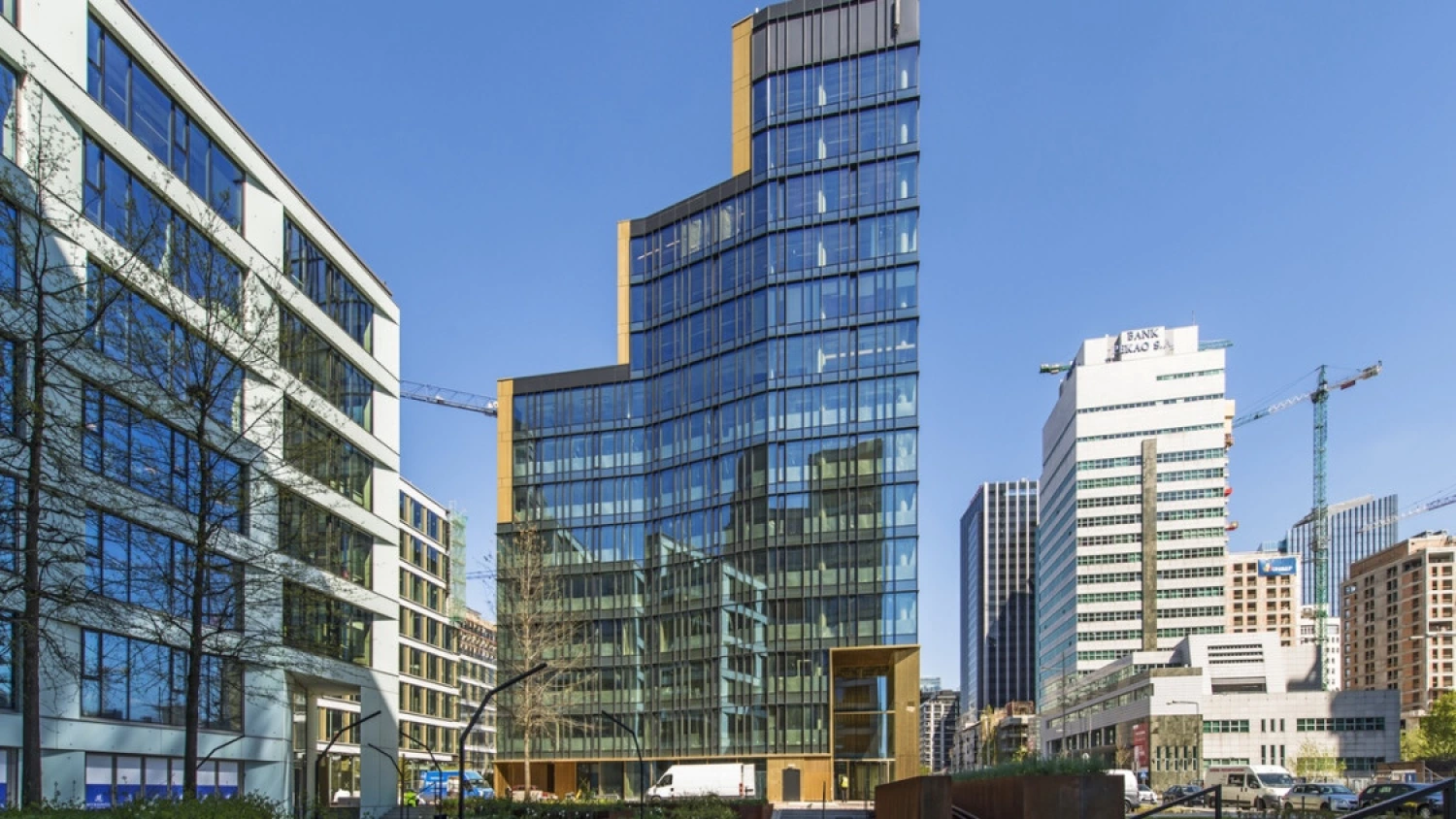
The lockdown period and the uncertainty of the economic impact of the coronavirus pandemic pushed some tenants to temporarily withhold their decisions in pending lease negotiations. Gross take-up climbed to 334,800 sqm in H1 2020, representing a 17% decrease on the same period in 2019, with most transactions having been commenced in the pre-pandemic environment. Cushman & Wakefield summarised H1 2020 on the Warsaw office market.
Key findings:
- There is currently approximately 680,000 sqm of office space under construction across Warsaw.
- More than 106,000 sqm of office space came on stream in the first six months of the year.
- In H1 2020, gross take-up was down by 17% on the same period in 2019.
- Warsaw’s vacancy rate stood at 7.9%, representing a 0.4 pp increase on the same period in 2019.
- Office rents remained flat at €24/sqm/month in the city centre and at €15/sqm/month in non-central locations.
Supply
Warsaw’s total office stock expanded to 5.69 million sqm in H1 2020, up by 106,800 sqm. The largest office completions in the January-June period included the two phases of Varso, Chmielna 89, DSV HQ, and Biura przy Willi, another phase of the Browary Warszawskie project.
Although no legislation limiting construction works was introduced during the lockdown, completion of some projects has been postponed from the second to the third quarter of 2020 due to protracted administrative procedures, limited labour availability and potential disruptions to supply chains, says Jan Szulborski, Senior Consultant, Cushman & Wakefield.
The office development pipeline totals nearly 680,000 sqm which is due for delivery in 2020-2022. Cushman & Wakefield estimates that 2020 will see completion of close to 361,000 sqm, more than double 2019’s volume. Given pre-let levels, these projects are very likely to come to fruition as scheduled. New supply planned for 2021 is estimated at 339,000 sqm, with some projects that have not secured pre-lets likely to be delayed until 2022.
A supply gap is on the cards for 2022-2023 as decisions to commence new projects have been shelved until the economic situation in Poland and the world stabilizes. Projects fully financed using own funds may be an exception here, adds Jan Szulborski.
Take-up
The lockdown period and the uncertainty of the economic impact of the coronavirus pandemic pushed some tenants to temporarily withhold their decisions in pending lease negotiations. Gross take-up climbed to 334,800 sqm in H1 2020, representing a 17% decrease on the same period in 2019, with most transactions having been commenced in the pre-pandemic environment. The largest deals included the PZU Group’s pre-let of 46,500 sqm in Generation Park Y, DSV’s lease of 20,035 sqm closed with the buyer of their building in Mokotów, and the renegotiation of a 19,010 sqm lease by Poczta Polska in the Domaniewska Office Hub.
The structure of occupier demand in H1 2020 was similar to that recorded in H1 2019 as new leases accounted for 62% of all deals closed in the surveyed period while renegotiations and expansions made up 30% and 8%, respectively.
Vacancies
The deteriorating health of the economy pushed Warsaw’s vacancy rate up by 0.4 pp quarter-on-quarter to 7.9%, albeit still lower year-on-year compared to where it was in the same period in 2019. Nevertheless, this still represents a slight statistical increase as the real estate market takes some time to respond to all economic developments.
The largest hikes in vacancies were recorded in Mokotów (+14,900 sqm / 14.1%), the East (+5,130 sqm / 8.6%) and the City Centre (+5,900 sqm / 5.7%). Another notable trend was the growth in office space for sublease. In Q2 2020, Warsaw had an estimated nearly 50,000 sqm of office space available for sublease, which volume is not included in the statistics for available office space.
Rents
Prime headline rents remained unchanged at €24/sqm/month in the city centre and at €15/sqm/month in non-central locations.
“Rental rates remained unchanged as deals were closed on pre-pandemic terms. A correction to commercial conditions is likely in the coming quarters if demand for office space weakens and the economy remains stuck in low gear,” says Katarzyna Lipka, Head of Consulting & Research, Cushman & Wakefield.
Outlook
Due to the lockdown caused by the outbreak of the Covid-19 pandemic, most companies embraced remote working and scaled-down business activity. In addition, the Polish economy is likely to slide into recession for the first time since 1989, which will reshape the economic landscape and have a knock-on effect on the office real estate market in the coming months. According to the latest outlook by Oxford Economics, Poland will see its GDP shrink by 3.5% year-on-year in 2020. The official data from the Central Statistical Office shows that consumption was down in this period by 4.5% year-on-year. Nevertheless, both indices are expected to bounce back strongly in the next quarters, along with a further easing of restrictions, says Katarzyna Lipka.



